Do animals sweat? Yes, but it isn’t very common. Some animals sweat in weird ways and much differently than humans. Here are the animals that sweat and other ways animals keep cool in the heat.
Animals that sweat include chimps, horses, monkeys, dogs, zebras, gorillas, and hippos. These secretions and glands include latherin, eccrine, apocrine, and merocrine sweat glands, hipposudoric acid and norhipposudoric acid.
In addition to sweating, animals use many other tactics to keep cool in the heat.
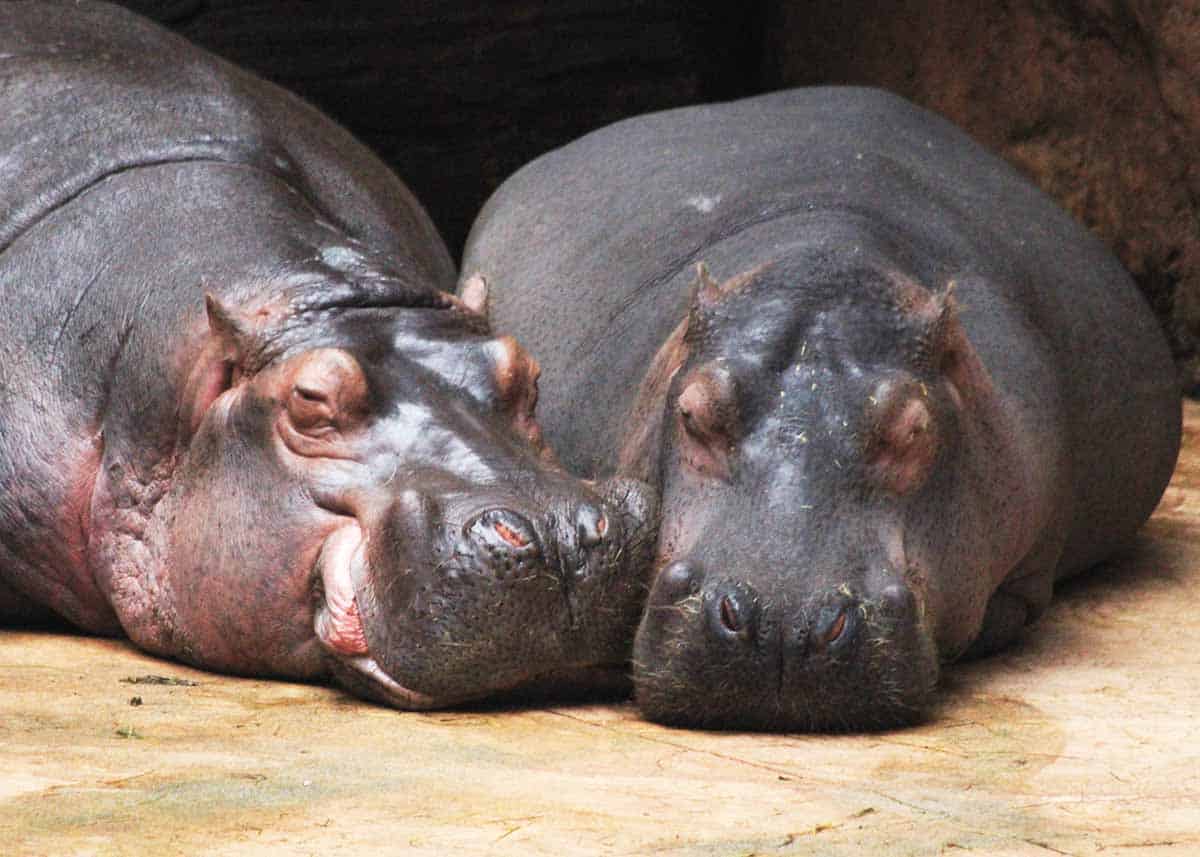
This article is part of my larger series about animal facts, including our detailed Marsupial Guide.
Here’s why animals sweat and the seven animals that sweat.
Table of Contents
What Animals Sweat?
Animals have sweat glands called the eccrine and apocrine glands, which are responsible for perspiration. However, most animals use other ways to regulate body temperature.
So, what animals sweat? Here are seven animals that sweat.
1. Horses
Horses sweat when it’s hot or during intense physical activity. However, horses have a thick, waterproof coat that prevents rapid evaporation of sweat that provides a cooling effect. They produce a thick foam or lather around the neck and hind legs to cool the body.
The foam contains a protein called latherin that gives the sweat a lather-like appearance when rubbed against a surface. The foam helps horses distribute water over the fur to facilitate evaporation and perspiration. It also reduces horse panting during hot weather.
To help with cooling, many horse owners use sweat scrapers (pictured below) to help horses manage sweat and heat.
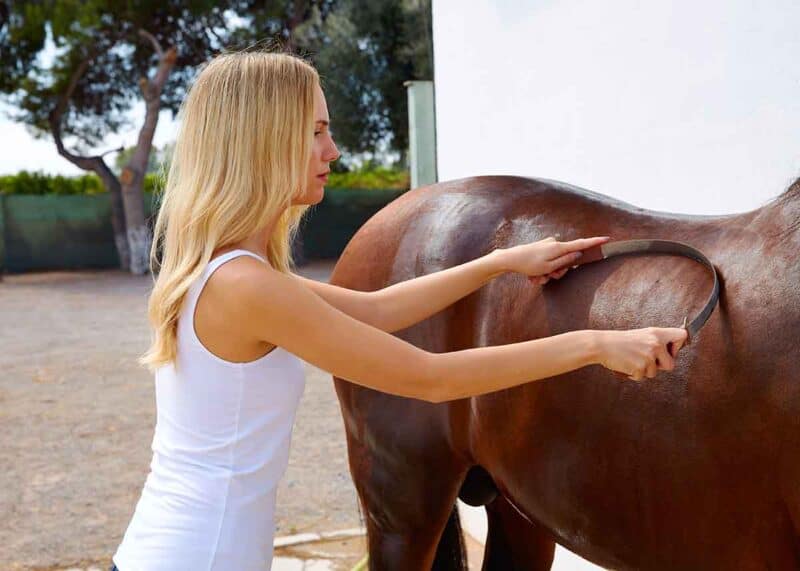
2. Chimpanzees
Chimpanzees are primates and have sweat glands like humans. They have more eccrine sweat glands than apocrine sweat glands, which help them regulate body temperature.
However, the sweat glands don’t regulate their body temperature effectively because of their thick fur and lower density of sweat glands.
Because of this, chimpanzees use other methods, like bathing in rivers and other water sources, to protect their bodies from overheating.
3. Monkeys
Like humans and other primates, monkeys have eccrine sweat glands all over their bodies to regulate body temperature. This varies by monkey species. Monkeys native to Africa and Asia (like baboons and macaques) have eccrine sweat glands which prevent overheating.
The macaques are native to Asia and have an equal number of eccrine and apocrine glands to help regulate body temperature. On the other hand, baboons sweat in response to heat but have fewer eccrine glands.
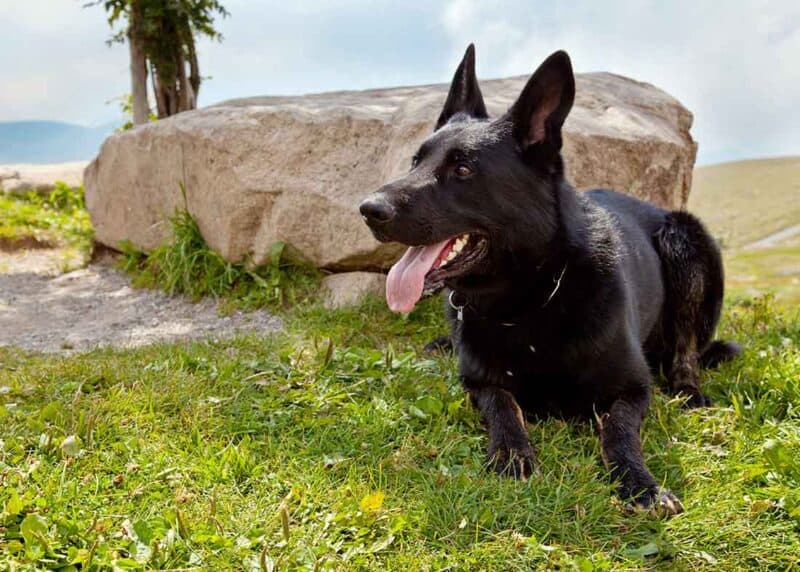
4. Dogs
Dogs sweat in specific areas of their bodies through two sweat glands: apocrine and merocrine sweat glands.
- Merocrine acts as human eccrine sweat glands on the dog’s paw pads. They keep a dog cool, hence the damp paw prints you notice on the ground on hot days.
- Apocrine sweat glands release pheromones – they don’t regulate a dog’s body temperature. The glands are spread throughout the dog’s body to enable dogs to identify another dog’s scent.
5. Zebras
The cooling mechanism of zebras is similar to that of horses. Their skin sweats and produces the protein called latherin to facilitate the passage of sweat from the skin to the tips of the hair.
As a result, the sweat is frothy, increasing its surface area to aid evaporation and keep the zebra cool.
Recent studies also show that zebras’ black and white stripes aid in cooling their bodies. Researchers speculate that black stripes have a higher temperature than white stripes when it’s hot to assist in transferring heat from the skin to the hair surface.
6. Gorillas
Gorillas have sweat glands that aid in thermoregulation. The silverback males also have an axillary organ in the armpit, which consists of four to six layers of the gland that secrete sweat.
This also produces a special scent that plays a critical role in communicating with other gorillas in the event of danger and when females are ready to mate.
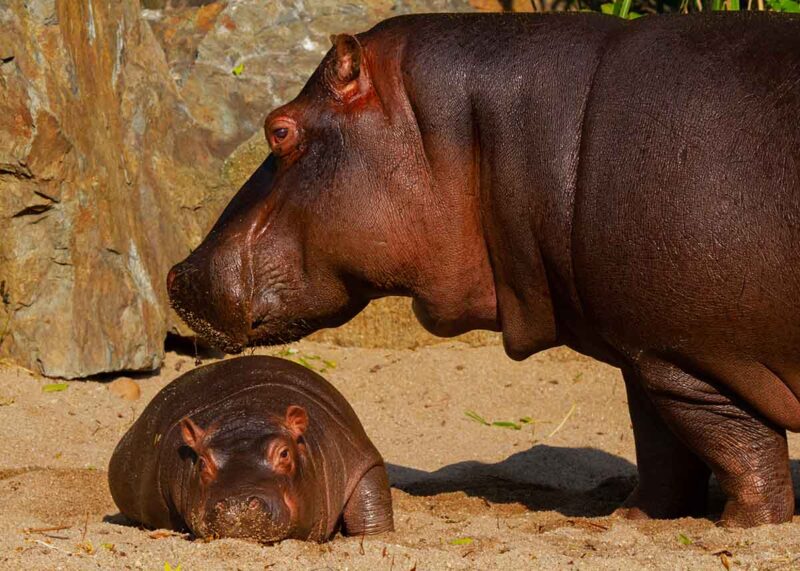
7. Hippopotamus
Hippos add to our list of animals that sweat. They secrete an unusual fluid referred to as blood sweat when they sweat. Surprisingly, hippos don’t have sweat glands but produce a red, sticky liquid believed to enhance cooling.
Hippos spend most of their time in the water to keep their delicate skin moist and prevent dehydration. However, when they venture onto land to find prey, the skin secretes the mucus to keep it moist. Initially, the fluid is colorless but turns red and brown after reacting with certain skin pigments.
This color combination has led to the myth that hippo milk is pink.
How many animals mate for life? Check out our Monogamous Animal Guide.
8 Other Ways Animals Cool Down
Ever wonder how animals stay cool? We seldom see them sweating, but they still keep cool. Sweating is a phenomenon associated with mammals, particularly primates, equines, and humans.
Since not all animals sweat to cool their bodies, here are other ways animals regulate body temperature.
1. Panting
Panting is another way animals use to keep cool. They release hot air and breathe cool air when panting to regulate body temperature.
Multiple animals use this method to cool down, including:
- Cats
- Dogs
- Pigs

2. Flapping the Ears
Elephants are notorious for flapping their ears when it’s hot. The habit aids in cooling blood flowing through the vessels in the ears.
Blood can cool by up to 14 Fahrenheit, and when coupled with other cooling techniques like spraying water on the ears, an elephant’s body hardly overheats.
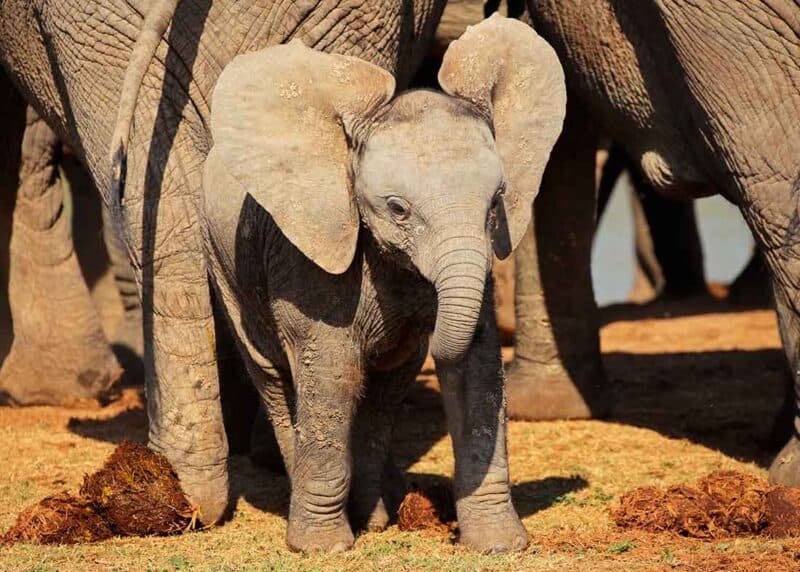
3. Rolling in the Mud
Since hippos, pigs, buffalos, and boars don’t have sweat glands, they roll in the mud to cool their bodies.
The water in the mud evaporates from the animal’s skin, carrying heat away and lowering the body temperature. Moreover, muddy water keeps them cool longer than clear water.
4. Estivation
The African bullfrog is known to use this method to cool its body. Estivation is the opposite of hibernation, which involves hiding away and developing a new body layer to cool it.
The frog burrows a hole deep into the ground and sheds layers of its moist skin, developing a cocoon that locks in moisture.
The process slows the animals’ metabolism, so the animal doesn’t eat much when the vegetation is dry and scarce. When it’s rainy, the hard layer softens, allowing the frog to resume its ordinary life.
Snails and earthworms also use this method to cool down and prevent their bodies from drying up in hot, dry months.
More reading: 25 animals that hibernate in winter.
5. Pooping
Some bird species like vultures and stork poop on themselves to cool their bodies. Although it’s one of the most disgusting cooling methods, it does a pretty good job.
Since their fecal matter is watery, it wards off heat as it evaporates from their bodies.
The Marabou stork keeps cool by pooping on its legs.
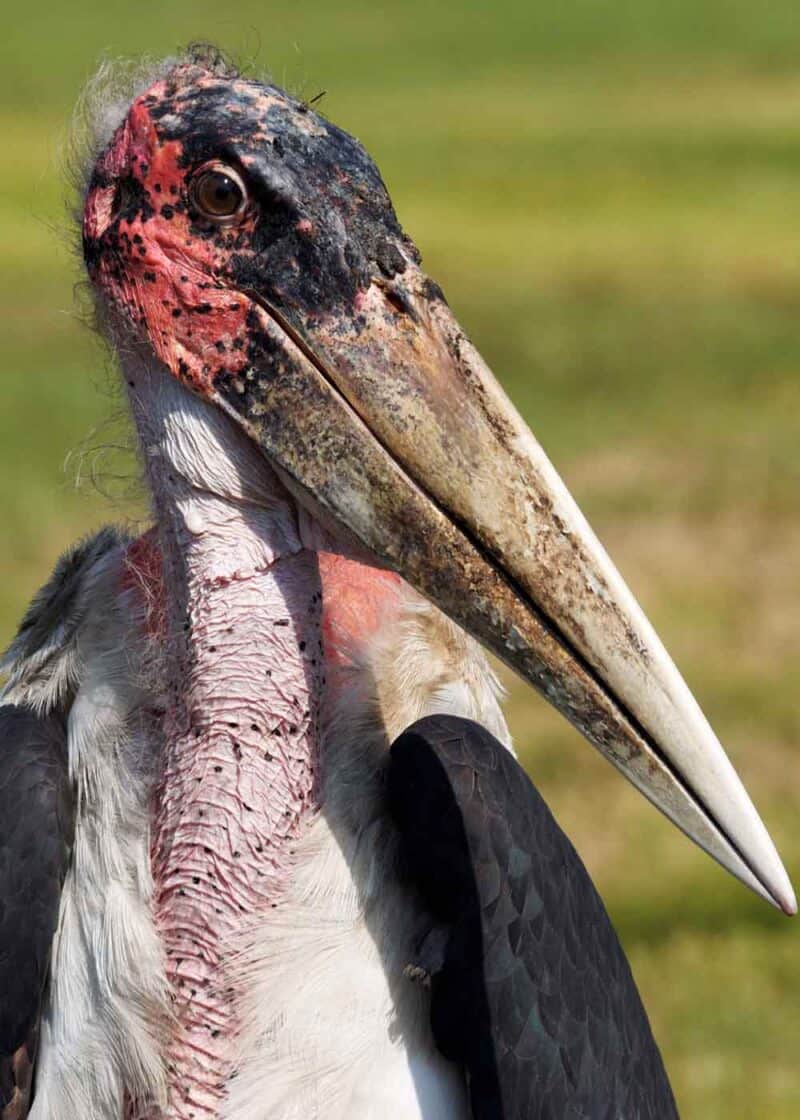
6. Gular Fluttering
Not all bird species poop on their legs to cool down. Many species use gular fluttering to cool down. Some of these animals include:
- Owls
- Doves
- Frigatebirds
- Quails
- Pelicans
- Nighthawks
- Herons
It involves rapid vibration of the bones and muscles in the throat to expose their moist membranes to air and enhance evaporation. The process involves the small muscles of the throat.
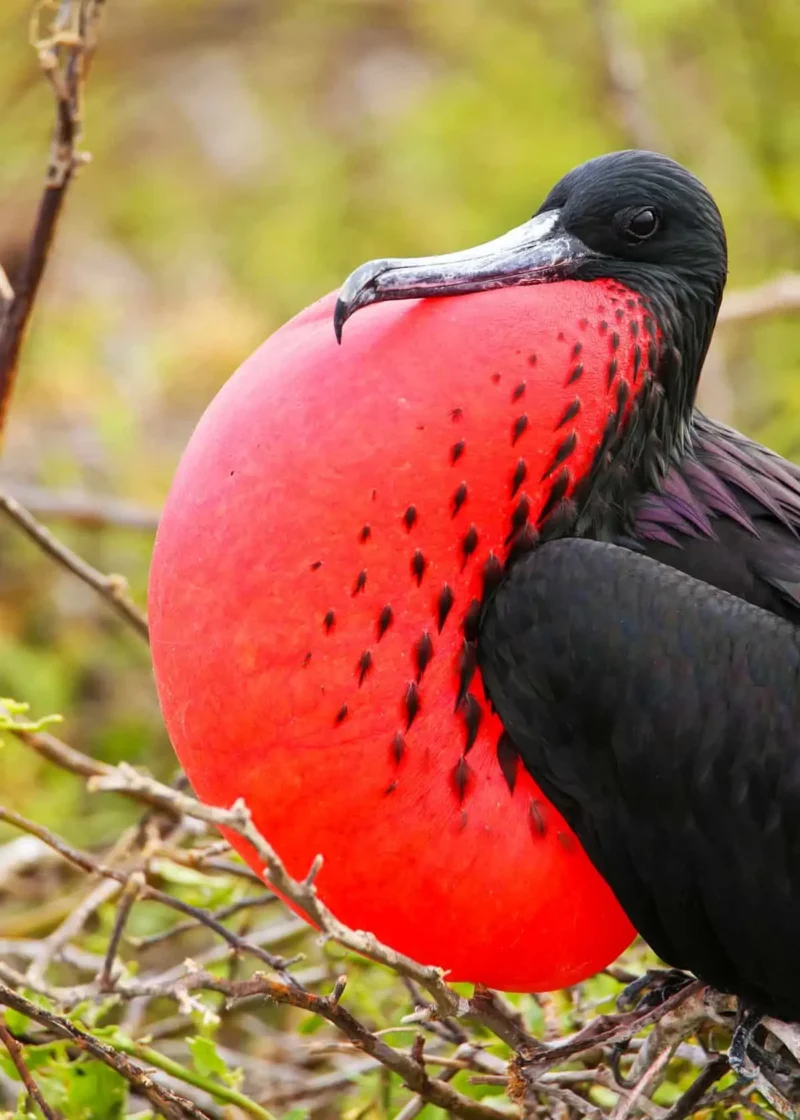
7. Soaking in Morning Dew
The Thorny Devil that lives in the dry Australian desert uses this technique to cool its body.
It brushes its body against the morning dew, allowing the tiny grooves on the body to absorb moisture. The body then directs the water to the mouth through the capillary system to ward off heat.
8. Hiding
Reptiles are cold-blooded and cool their bodies down by hiding from the sun.
Their bodies lack an internal mechanism to regulate body temperature like warm-blooded animals. Therefore, they look for shaded areas to ward off the heat if an area is too hot.
How Do Animals Sweat? 2 Ways
Sweating is a mechanism for regulating body temperature. It’s also known as perspiration and causes the body to produce a salty, watery fluid through the skin’s pores.
The watery fluid forms beads of water on the skin, which evaporate, taking heat with them. The body uses two types of sweat glands to release sweat:
1. Eccrine Sweat Glands
These glands spread throughout the body and open directly to the skin’s surface. Eccrine glands are more concentrated on the neck, forehead, and back region in humans, but for mammals like cats and dogs, they’re located on their noses and paw pads.
Cows and sheep also have eccrine sweat glands above the lips and noses. Secretions of eccrine sweat glands consist of water and sodium chloride, which increase with physical activity.
2. Apocrine Sweat Glands
These sweat glands open into the hair follicles, growing on the skin’s surface. They secrete a heavier, fat-laden watery substance that has a distinct odor. The odor develops when the sweat breaks down and mixes with bacteria on the skin.
Apocrine glands are prevalent in mammals but hardly provide an efficient way of cooling the body because the oily substance doesn’t evaporate easily.
In humans, apocrine sweat glands occur in specific areas of the skin, including the anus, groin, and armpits.
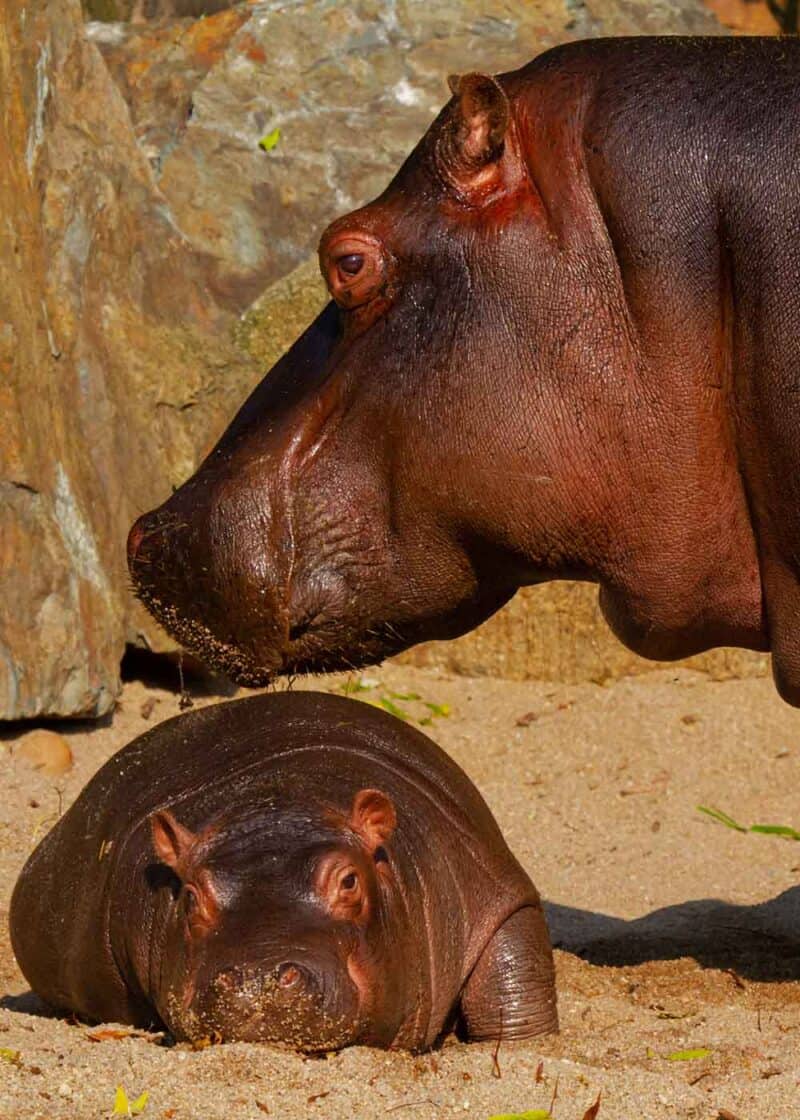
Did you know? 5 Mammals That Lay Eggs
Takeaway: Which Are the 7 Animals That Sweat?
Seven animals that sweat include zebras, hippos, horses, monkeys, dogs, gorillas, and chimpanzees. They have two sweat glands (apocrine and eccrine sweat glands) that help cool down the body when it’s hot.
Animals that don’t have sweat glands use other cooling methods like pooping, rolling in mud, flapping their ears, and hiding, among others.
Drew Haines is an animal enthusiast and travel writer. She loves to share her passion through her writing.
She graduated high school at sixteen and started her own business, Everywhere Wild Media. And she runs Everywhere Wild and JustBirding. She also guest blogs on Storyteller.Travel
She lived in Ecuador for 6 years and explored the Galapagos Islands. Currently based in N.S., Canada.
